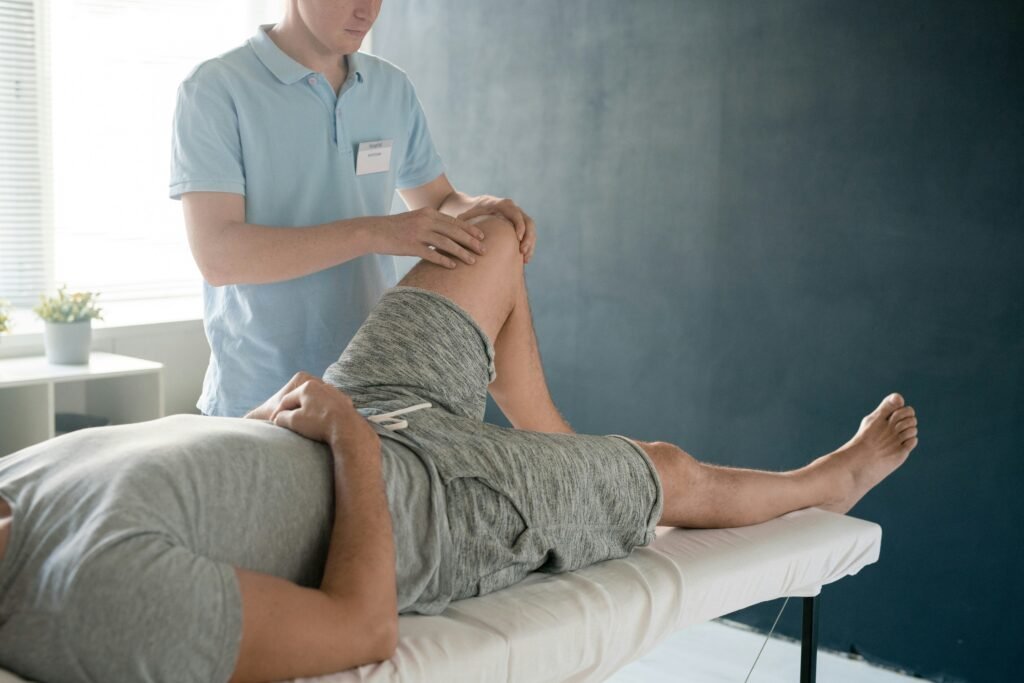When Physical Therapy Isn’t Enough: What Comes After Conservative Care?

You’ve Tried Everything — But the Pain Is Still There
For most people facing joint pain, the first course of action is conservative care. This might mean physical therapy, anti-inflammatory medications, rest, activity modifications, injections, or a combination of these approaches. And in many cases, these treatments are enough to restore mobility, reduce discomfort, and help you return to your normal activities.
But what happens when they’re not?
If you’ve diligently followed your doctor’s recommendations, attended every physical therapy session, and made lifestyle changes — yet your symptoms persist — you may be at a turning point. This is the stage where conservative measures stop working, and more definitive treatment becomes the logical next step.
In this guide, we’ll help you recognize when you’ve reached that point, explain your surgical options, and explore why more U.S. patients are choosing to have surgery abroad with Mezocare.
Signs It’s Time to Move Beyond Conservative Care
Physical therapy and non-surgical treatments aren’t meant to be indefinite if they aren’t working. Here are key signs that it may be time to consider surgical options.
1. Persistent Pain That Affects Your Quality of Life
If you find yourself planning your day around pain — avoiding stairs, skipping social events, or limiting travel — it’s more than an inconvenience. Persistent pain that limits your daily activities is a major red flag that conservative care has reached its limit.
2. Loss of Mobility Despite Ongoing Effort
Physical therapy should gradually improve your range of motion and strength. If you’ve been consistent for several months but see no progress, or your mobility is actually declining, there may be structural damage that can’t be corrected with exercise alone.
3. Recurring Swelling and Joint Instability
Swelling that repeatedly returns after activity, or a sensation that your joint might “give out,” often means there’s mechanical damage inside the joint. Continued instability increases your risk of falls and can accelerate deterioration.
4. Pain at Rest or at Night
When joint pain continues even when you’re sitting, lying down, or trying to sleep, it’s usually a sign of advanced joint damage. At this stage, physical therapy alone is unlikely to provide relief.
5. Short-Term Relief From Injections or Medications
If cortisone shots, hyaluronic acid injections, or prescription medications provide relief for only a short time before pain returns, you’re likely treating symptoms — not the cause.

Your Surgical Options Explained
If your orthopedic specialist confirms that conservative care is no longer working, they may discuss one or more of these surgical solutions.
Total Joint Replacement
The damaged joint surfaces are replaced with an artificial implant. This is most common for hips and knees and can dramatically improve mobility and quality of life.
- Best for: Severe arthrosis or joint deterioration
- Recovery: 3–6 months
- Results: 15–20 years of implant life for most patients
Partial Joint Replacement
When only part of the joint is damaged, a partial replacement can preserve more of your natural joint structure.
- Best for: Damage limited to one area of the joint
- Recovery: 2–4 months
- Results: Often feels more “natural” than a total replacement
Arthroscopy
A minimally invasive procedure using a camera and small tools to repair or clean out the joint.
- Best for: Meniscus tears, cartilage damage, or loose bodies
- Recovery: Weeks, not months
- Results: Effective for early or moderate damage
Expert Tip: Early surgical intervention often results in faster recovery, fewer complications, and longer-lasting results compared to waiting until the damage is severe.
Why Patients Are Choosing Surgery Abroad
Cost is one of the biggest factors pushing patients to explore international care. In the U.S., joint replacement surgery can cost $35,000–$60,000. Even with insurance, out-of-pocket expenses may run from $4,000 to $12,000 or more.
In Mexico City, the same procedures performed by internationally trained, board-certified surgeons cost $10,000–$14,000 all-inclusive through Mezocare — a 40–60% savings.
Beyond Cost: The Quality Factor
Mezocare’s partner hospitals and clinics:
- Are internationally accredited
- Use the same implants and surgical techniques as leading U.S. hospitals
- Employ English-speaking, board-certified surgeons
- Offer concierge-level patient support before, during, and after surgery
Cost Comparison Chart
| Procedure | Average U.S. Cost | Mezocare Cost | Savings |
| Knee Replacement | $50,000 | $14,000 | 72% |
| Hip Replacement | $45,000 | $13,500 | 70% |
| Shoulder Replacement | $42,000 | $12,800 | 69% |
What to Expect When You Choose Mezocare
When you book surgery through Mezocare, you get a fully coordinated experience:
- Free Virtual Consultation – Discuss your symptoms, review your medical history, and explore options.
- Personalized Care Package – Includes surgeon bios, procedure details, pricing, and travel itinerary.
- Arrival in Mexico City – Airport pickup, hotel check-in, and in-person guidance from our companion team.
- Surgery and Recovery – Treatment at a vetted, accredited hospital with ongoing post-op support.
- Follow-Up After You Return Home – Virtual check-ins with your surgeon and ongoing recovery guidance.

FAQs: Moving Beyond Physical Therapy
How do I know I’m ready for surgery?
If your symptoms significantly impact your quality of life, and you’ve tried conservative treatments without lasting relief, it’s time to discuss surgical options.
Will I still need PT after surgery?
Yes — physical therapy after surgery is essential for regaining strength, mobility, and function.
How safe is surgery in Mexico?
Mezocare works only with board-certified, internationally accredited hospitals and surgeons, ensuring the same or higher safety standards as in the U.S.
How quickly can I have surgery through Mezocare?
Most patients can have surgery scheduled within 2–4 weeks, depending on medical clearance.
Can I bring a companion?
Absolutely. We coordinate travel, lodging, and even hospital access for companions.
Summary: When It’s Time to Take the Next Step
- Persistent pain that affects daily activities
- Loss of mobility despite ongoing therapy
- Recurring swelling and instability
- Pain that continues at rest or at night
- Only short-term relief from conservative treatments
If you recognize these signs, it may be time to explore surgery — and Mezocare is here to guide you every step of the way.
Take the First Step Today
With Mezocare, you can access world-class orthopedic care at a fraction of the U.S. cost, without sacrificing quality or safety. Our team manages every detail so you can focus on your health and recovery.
Book your free virtual consultation today and discover your best next step toward lasting relief.



